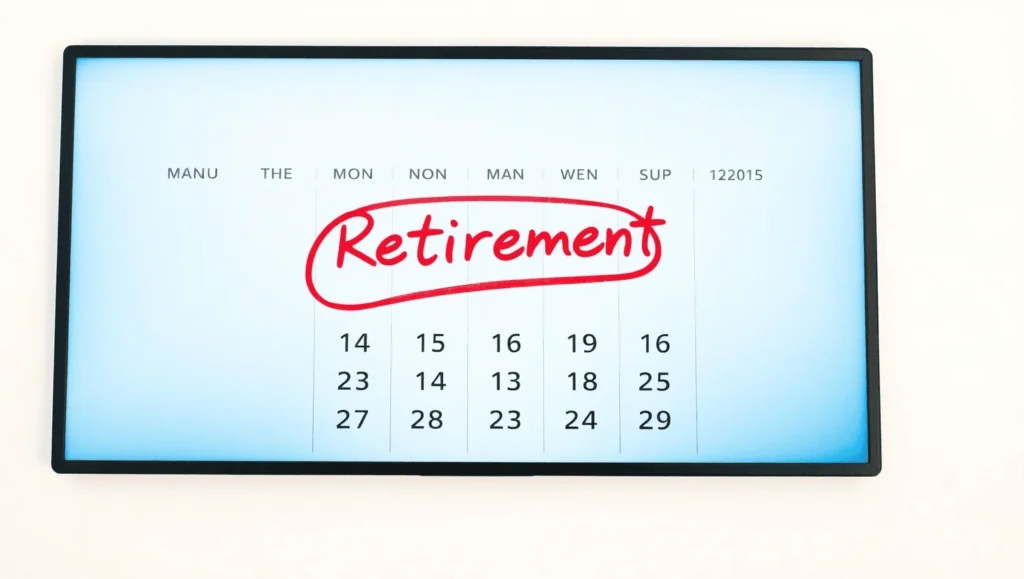Early retirement is becoming a goal for many people who want more freedom and flexibility in their lives. The idea of leaving the workforce before the traditional retirement age appeals to those who value time over money. But achieving this dream requires careful planning and smart financial decisions.
One of the most popular approaches to early retirement is the FIRE movement (Financial Independence, Retire Early). This movement emphasizes living below your means, saving aggressively, and investing wisely to achieve financial independence. By following these principles, thousands of people have managed to retire in their 30s or 40s.
In this post, we’ll explore the key strategies that can help you retire early. You’ll learn how to build wealth, create passive income streams, and overcome challenges along the way. Whether you’re just starting your journey or refining your plan, these tips will put you on the fast track to financial independence.
Ready to take control of your future? Keep reading to discover the secrets to early retirement. For more information on the FIRE movement, check out this FIRE resource guide. If you’re looking for ways to calculate your retirement goals, try this retirement calculator.
Understanding Early Retirement and Financial Independence
Early retirement is a concept that has captured the imagination of many people seeking freedom from traditional work routines. Retiring before the age of 50 might seem like a dream, but with the right financial strategies and discipline, it can become a reality. This section explores the fundamentals of early retirement, the principles of financial independence, and the growing movement that combines the two: FIRE (Financial Independence, Retire Early).
What is Early Retirement?
Early retirement refers to leaving the workforce permanently before the typical retirement age of 65. For many, this means retiring in their 40s or even their 30s. The appeal lies in having more time to focus on passions, hobbies, and personal goals rather than being tied to a 9-to-5 job.
The popularity of early retirement has grown significantly over the years, driven by the desire for a more balanced and fulfilling life. Unlike traditional retirement, which often requires decades of saving, early retirement demands a highly strategic approach. It involves creating enough wealth to sustain your lifestyle for several decades without relying on a paycheck.
Financial Independence as a Foundation
A key component of early retirement is financial independence (FI). Financial independence means having enough income-generating assets to cover your living expenses without needing a traditional job. Achieving FI often involves a combination of aggressive saving, smart investing, and careful expense management.
For example, many early retirees aim to save at least 25 times their annual expenses, a guideline based on the 4% withdrawal rule. This rule suggests you can withdraw 4% of your investment portfolio annually in retirement without depleting your savings.
Financial independence is about more than just money. It represents the freedom to make choices about how to spend your time, whether that involves traveling, pursuing hobbies, or dedicating yourself to causes you care about.
The FIRE Movement
The FIRE movement stands for Financial Independence, Retire Early. This philosophy has gained momentum in recent years, particularly among millennials who value experiences and autonomy over material wealth.
The FIRE movement combines the concepts of financial independence and early retirement into a cohesive lifestyle strategy. Followers of FIRE aim to maximize their savings rate—often exceeding 50% of their income—and invest heavily in income-generating assets like index funds, dividend stocks, or real estate.
Principles of the FIRE Movement
- Aggressive Saving and Budgeting
FIRE followers prioritize saving as much as possible by cutting unnecessary expenses and embracing a minimalist lifestyle. Tools like budgeting apps (e.g., YNAB or Mint) help track spending and optimize savings. - Investing for Growth
Investing plays a crucial role in the FIRE strategy. Many adherents focus on low-cost index funds, which provide steady returns with minimal management. Others explore real estate investments or dividend-paying stocks to generate passive income. - Lifestyle Optimization
Unlike traditional retirement planning, which focuses primarily on wealth accumulation, FIRE emphasizes aligning spending with personal values. This means spending money intentionally on what brings the most fulfillment.
How FIRE Differs from Traditional Retirement Planning
Traditional retirement planning typically involves saving gradually over 40+ years and relying on employer-sponsored retirement accounts like 401(k)s or pensions. Early retirees, however, must generate enough wealth in a shorter time frame. They also need to account for challenges like healthcare costs before Medicare eligibility and potential tax penalties for withdrawing from retirement accounts early.
The FIRE movement requires discipline and a willingness to make sacrifices, but it offers unparalleled rewards for those who succeed. Unlike the traditional model, FIRE focuses on reclaiming time and living life on your own terms.

Building Wealth for Early Retirement
Achieving early retirement requires careful planning and disciplined financial habits. Building wealth is a cornerstone of this process. In this section, we’ll explore the importance of retirement savings and effective investment strategies to accelerate your journey toward financial independence.
The Importance of Retirement Savings
Saving for early retirement is more than just setting aside money. It’s about taking advantage of the power of compounding, which allows your money to grow exponentially over time. Compounding works by reinvesting earnings, so your investments generate returns on both the original amount and the accumulated returns.
For example, saving $500 per month starting at age 25 could grow into a substantial nest egg by the time you’re 45, assuming an average annual return of 7%. Starting early maximizes the benefits of compounding, giving your money more time to grow.
To retire early, you’ll need to adopt a high savings rate. This means saving a significant portion of your income—often 50% or more. While this may sound daunting, it’s achievable with careful budgeting and lifestyle adjustments. Focus on reducing unnecessary expenses, such as dining out or luxury purchases, and redirect those funds toward your savings goals.
Aggressive saving strategies can include automating your savings. Set up automatic transfers to a dedicated retirement account, like a Roth IRA or 401(k). This ensures consistency and minimizes the temptation to spend that money elsewhere.
Investment Strategies for Building Wealth
Saving alone won’t get you to early retirement—you’ll also need to invest wisely. Investments allow your money to grow at a faster rate than it would in a standard savings account. Consider the following options:
- Index Funds
Index funds are a popular choice for early retirees. They offer low fees, broad market exposure, and a historically reliable rate of return. By investing in funds that track major indices like the S&P 500, you can grow your wealth steadily over time. - Stocks
Individual stocks can offer higher returns but come with greater risks. To minimize risk, focus on blue-chip companies with a history of consistent performance. Dividend-paying stocks are particularly attractive, as they provide regular income that can support you in retirement. - Real Estate
Real estate is another powerful wealth-building tool. Owning rental properties can generate passive income, which is a key element of early retirement. Additionally, property values often appreciate over time, adding to your net worth.
Diversification is essential when building your investment portfolio. By spreading your money across different asset classes—such as stocks, bonds, and real estate—you reduce the impact of market volatility. A diversified portfolio balances risk and reward, ensuring stable growth over the long term.
Regularly reassess your investments to make sure they align with your early retirement goals. Adjust your portfolio as needed, considering factors like market conditions, your age, and your risk tolerance.
Tools to Support Your Wealth-Building Journey
To stay on track, take advantage of financial tools and resources. Use a retirement calculator to estimate how much you’ll need to save to retire early. Apps like Mint and YNAB (You Need a Budget) can help you manage your expenses and increase your savings rate.
Explore tax-advantaged accounts such as Roth IRAs and 401(k)s to maximize your retirement savings. These accounts offer significant tax benefits that can help you grow your wealth faster. For more information, visit resources like IRS.gov or trusted financial platforms like Vanguard.

Creating Passive Income Streams for Financial Independence
Building passive income streams is a cornerstone of early retirement. These income sources allow you to generate consistent revenue without needing to work actively. Here are two highly effective strategies:
Dividend Stocks and Real Estate
Passive income through dividend stocks and real estate investing offers reliable ways to achieve financial independence.
How Dividend Stocks Work
Dividend stocks provide regular payouts, making them an excellent option for retirement income. When you invest in companies that pay dividends, you earn a portion of their profits. This income can be reinvested or used to cover living expenses during early retirement.
For example, companies like Coca-Cola or Procter & Gamble have a history of consistent dividend payments. By creating a portfolio of dividend-paying stocks, you can build a predictable income stream. Start by researching dividend yield, payout ratios, and company stability. Learn more about dividend investing here.
The Benefits of Real Estate Investing
Real estate is another proven method to build passive income. Owning rental properties allows you to generate monthly income while benefiting from long-term property value appreciation. For instance, owning a single-family home or multi-unit apartment can create a steady cash flow when properly managed.
Platforms like Roofstock and Fundrise make real estate investing accessible to beginners, even if you don’t want to manage properties directly. Explore real estate investing basics here.
Transitioning from traditional employment to relying on dividend stocks or rental income requires careful planning. Diversifying your income sources will help ensure stability as you pursue early retirement.
Side Hustles and the Gig Economy
Another way to accelerate your journey to early retirement is by leveraging side hustles and gig work.
How Side Hustles Boost Retirement Goals
Side hustles provide additional income that can be saved or invested. Even if you work a traditional 9-to-5 job, dedicating evenings or weekends to a side hustle can significantly increase your savings rate. For example, freelancing, tutoring, or selling handmade products online can generate extra funds.
Income from side hustles can be directly invested into your retirement accounts, such as a Roth IRA or a taxable brokerage account. This boosts your wealth-building efforts and reduces your dependence on a single income stream.
Popular Platforms for Side Hustles
The gig economy offers various platforms to start earning quickly. Websites like Upwork and Fiverr connect freelancers with clients who need skills like graphic design, writing, and marketing. If you prefer something more hands-on, platforms like Etsy allow you to sell handcrafted items, while Uber or DoorDash can help you earn through flexible hours.
Each dollar earned through these platforms can help you save more aggressively, invest wisely, and achieve financial independence faster. Discover the best side hustle platforms here.
Overcoming Challenges and Common Myths About Early Retirement
Achieving early retirement is an exciting goal, but it comes with its own set of challenges and misconceptions. Understanding and addressing these obstacles can help you stay on track toward financial independence. This section will explore the myths surrounding early retirement and offer practical strategies to maintain motivation and discipline throughout the journey.
The Reality of Early Retirement
When people think about early retirement, many myths and misconceptions can cloud their judgment. One of the most common myths is that you need an enormous nest egg to retire early. While it’s true that financial independence requires careful planning and savings, the amount needed varies depending on your lifestyle and retirement goals. A minimalist approach, for example, can significantly reduce the amount you need to save.
Another widespread belief is that retiring early means you must stop working entirely. In reality, many early retirees choose to pursue passion projects, start small businesses, or engage in part-time work. These activities not only provide supplemental income but also add purpose and structure to life after retirement.
To develop a sustainable early retirement plan, start by assessing your future expenses and determining how much income you’ll need to cover them. Tools like Mint and YNAB can help you track spending and identify areas for cost-cutting. Additionally, consider diversifying your income sources, such as through investments or rental properties, to ensure long-term financial stability.
Maintaining Motivation and Staying Disciplined
The path to early retirement is a marathon, not a sprint. Staying motivated and disciplined over the years requires a clear vision and consistent effort. Here are some practical tips to help you stay on track:
1. Set Specific Goals
Break down your ultimate goal of early retirement into smaller, achievable milestones. For instance, focus on saving your first $10,000, then $50,000, and so on. Celebrate these wins to keep yourself motivated.
2. Track Your Progress
Regularly review your financial plan and track your progress using retirement calculators like the ones offered by Vanguard or Charles Schwab. Seeing your savings and investments grow can boost morale and reinforce good habits.
3. Surround Yourself with Like-Minded People
Join communities focused on financial independence, such as forums or social media groups. Connecting with others on the same journey can provide support, inspiration, and accountability.
4. Embrace a Minimalist Lifestyle
A minimalist lifestyle can play a significant role in reducing expenses and accelerating savings. By prioritizing needs over wants, you can redirect more money toward your retirement fund. Downsizing your home, cutting unnecessary subscriptions, and being mindful of spending habits are just a few ways to embrace minimalism.

Conclusion
Early retirement is not just a dream—it’s an achievable goal with the right strategies and mindset. To retire before 50, focus on building a solid financial foundation. Start by creating a high savings rate, investing in diversified assets like index funds and real estate, and generating passive income through dividend stocks or side hustles. Use tools like retirement calculators and budgeting apps to track your progress and adjust your plan as needed.
Now is the time to take action. Begin by assessing your current financial situation, setting realistic goals, and creating a step-by-step plan to reach financial independence. Remember, consistency and discipline are key to achieving early retirement. Every small step today brings you closer to a future of financial freedom.
The benefits of retiring early go beyond finances—it’s about living life on your terms. With proper planning, you can enjoy more time for family, travel, and pursuing passions. Don’t wait to start your journey toward early retirement. Visit resources like Investopedia’s Retirement Planning Guide for additional insights and tips.
By taking control of your financial future, you can unlock the freedom and flexibility that early retirement offers. The best time to start is now!
